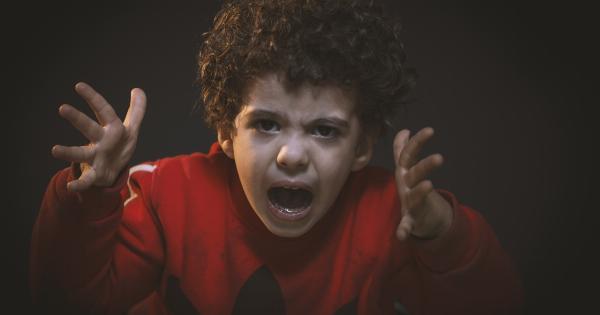Childhood can be an emotional rollercoaster for children as they navigate through different experiences and challenges.
Anger is a natural emotion that all children experience at some point, but it is essential for parents and caregivers to understand the difference between innocent anger outbursts and pathological ones. By being able to spot the difference and implementing effective anger management techniques, adults can help children develop healthy coping mechanisms that will benefit them throughout their lives.
Understanding Innocent Anger Outbursts
Innocent anger outbursts are a normal part of a child’s emotional development. They occur in response to certain triggers such as frustration, disappointment, or feeling underappreciated.
These outbursts may be intense but are typically short-lived and do not cause harm to the child or others. It is crucial for adults to remember that anger is a valid emotion, and children have the right to express it.
During innocent anger outbursts, children often display common signs such as crying, yelling, stomping their feet, or even throwing tantrums.
These behaviors may seem excessive, but they are a child’s way of expressing their emotions when they do not have the vocabulary or understanding to articulate them effectively.
To manage innocent anger outbursts effectively, adults can engage the child in open communication, encourage the use of age-appropriate language to express their feelings, and teach calming techniques such as deep breathing or counting to ten.
By providing a safe and understanding environment, children can learn to express their anger in healthier ways.
Recognizing Pathological Anger Outbursts
While innocent anger outbursts are a normal response to certain situations, pathological anger outbursts are more severe and require closer attention.
Pathological anger refers to anger that is disproportionate, recurring, and leads to harm or danger to the child or others around them.
Children experiencing pathological anger outbursts often display extreme aggression, violence, and explosiveness. Their outbursts may last for extended periods and could result in physical harm or property damage.
These reactions are not developmentally appropriate and require intervention to address the underlying issues.
It is important to note that pathological anger outbursts can be a symptom of an underlying mental health condition such as oppositional defiant disorder (ODD), attention deficit hyperactivity disorder (ADHD), or conduct disorder.
If a child’s anger outbursts are persistent, intense, and causing harm or distress, it is crucial to seek professional help from a licensed mental health practitioner.
Effective Anger Management Techniques for Pathological Anger
When it comes to managing pathological anger outbursts in children, a multi-faceted approach is often necessary. Depending on the severity and underlying causes, a combination of therapy, medication, and behavioral interventions may be recommended.
Here are some effective anger management techniques that can be helpful:.
1. Cognitive Behavioral Therapy (CBT)
CBT is a widely-used therapeutic approach that helps individuals identify and challenge negative thought patterns and behaviors.
In the case of pathological anger, CBT can assist children in recognizing triggers, understanding the consequences of their actions, and developing alternative coping strategies.
2. Parental Support and Involvement
Children with pathological anger can benefit greatly from the support and involvement of their parents or caregivers.
Collaborating closely with mental health professionals, parents can learn effective communication techniques, implement consistent discipline strategies, and create a structured and nurturing environment conducive to emotional growth.
3. Stress Management Techniques
Teaching children coping mechanisms to reduce stress can help prevent and manage pathological anger outbursts.
Techniques like physical exercise, relaxation exercises, or engaging in activities they enjoy can serve as healthy outlets for emotional expression.
4. Medication
In some cases, medication may be prescribed by a qualified healthcare professional to manage underlying issues contributing to pathological anger outbursts.
Medication can be used in conjunction with therapy and other interventions to help stabilize a child’s emotional state.
The Importance of Early Intervention
Recognizing and addressing anger outbursts in children, whether innocent or pathological, is of utmost importance.
Early intervention allows for the identification and management of underlying issues, reducing the risk of long-term consequences that may persist into adulthood.
By keeping an open line of communication and seeking professional help when necessary, parents and caregivers can help children develop healthy anger management techniques, fostering emotional well-being and positive relationships.
Conclusion
Understanding the difference between innocent anger outbursts and pathological ones enables adults to respond appropriately and provide the necessary support to children.
By implementing appropriate anger management techniques, children can learn how to express their emotions in a healthy way, preventing long-term emotional difficulties and promoting their overall well-being.</p.






























